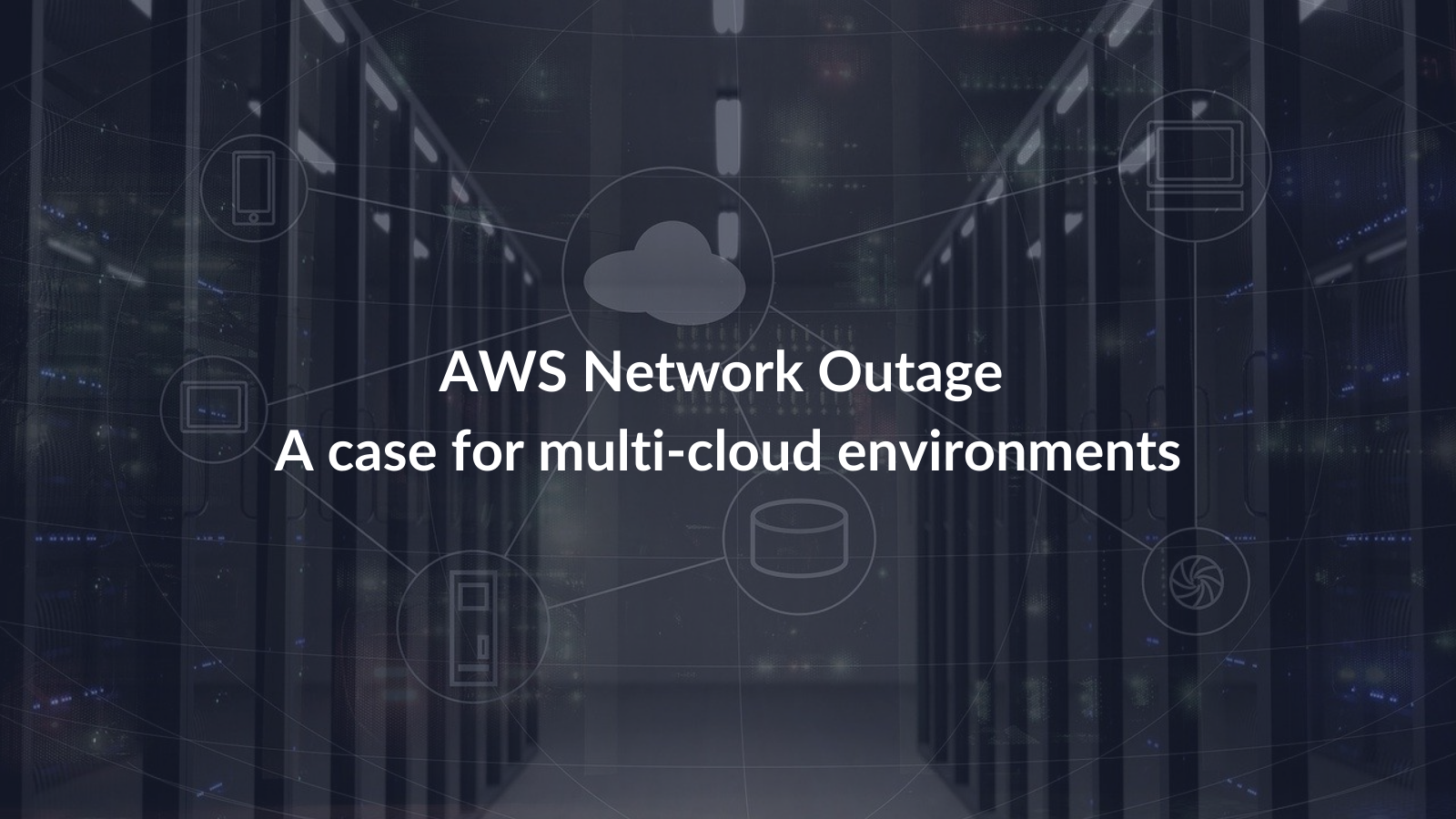Disruptions around the world caused by AWS network outage builds case for Multi-Cloud Environments

It was just two months ago when I wrote about Facebook’s outage which had many people wondering, including my wife, if the internet was down. On Tuesday, December 7th at around noon, DownDetector, a real-time outage monitoring service, identified that a region of Amazon Web Services (AWS) network, AWS US-East-1, went down and impacted AWS services around the world. More than 24 hours later, Amazon was still resolving the issues to fully recover its services. We know what happened, and it is similar to Facebook’s outage. AWS Services created additional cycles through failure messages and more services came down. Like I said in the Facebook article, this happens more often than people realize. In June, Fastly, a content delivery network, took down its own network with a bad software update, which in turn brought down larger online platforms. Microsoft Teams also had several outages this past Spring, which created issues across Office web apps and other Microsoft services. Cloud provider services fail, just like the Internet does.
What is a multi-cloud strategy and why use it?
The term “multi-cloud” is thrown around a lot but is not very well defined. Simply put, it is building an infrastructure that is agnostic to the platform it is hosted on and is also resilient to the failure of a single platform. The environment could be on a stand-alone private cloud, on a private-public cloud hybrid, or on multiple public cloud providers. Companies use multi-cloud environments to distribute computing resources and minimize the risk of downtime and data loss. They also increase the computing power and storage available to a business. The importance of a multi-cloud strategy is not only about what platform the workloads are hosted on, but also the seamless deployment and management across platforms.
What are the advantages?
There are a few advantages to implementing a multi-cloud strategy, the first of which is the ability to select from the services that each cloud platform offers to customize your cloud infrastructure and align to your business goals. This strategy also helps to reduce risk and cost. For instance, if one of the platforms fail, your business can maintain operations from another platform in the multi-cloud environment. Second advantage is the digital transformation it takes to re-platform to a multi-cloud architecture. Moving an organization into a multi-cloud architecture allows businesses to jumpstart the adoption for DevOps best practices. The third advantage is the ability to adjust a company’s infrastructure to its changing needs especially when new services are offered within different clouds or with on premise technology. Any multi-cloud architecture will have flexibility and resiliency worked in.
Best practices for your multi-cloud environment
In the last blog I identified the five design principles:
- Perform operations as code
- Make frequent, small, reversible changes
- Refine operations procedures frequently
- Anticipate failure
- Learn from all operational failures
Considering anticipated failures and learning from all operational failures, should drive any design to look at a multi-cloud approach. As I previously mentioned, the public cloud providers do go down. Moving to a continuous integration and continuous delivery (CI/CD) model for your infrastructure will allow your workspace development to keep up with application development. Key to setting up this environment is ensuring that it allows you to make operational changes as well as reversible changes. Building an to host applications gives you the ability to adjust when the underlining provider and/or hardware fail. With all of this, it is important to focus on your connectivity and your security.
Failure should be treated as inevitable for any setup and should be planned for. This is not only a technology plan but a business plan. Business continuity should be built into any workplace workflow. As you build the infrastructure aligned to your business needs, you should make sure your technology continuity also aligns. For many companies, this resiliency could mean a multi-cloud approach. If you would like to know more about how a multi-cloud approach would work in your environment, or need help managing the connectivity, networking, or security of your infrastructure, Vandis can help. Reach out to us today.
Blog Post Cards
Keep In Touch With Vandis
Stay up-to-date on the latest in cyber security, networking and connectivity, and cloud solutions
